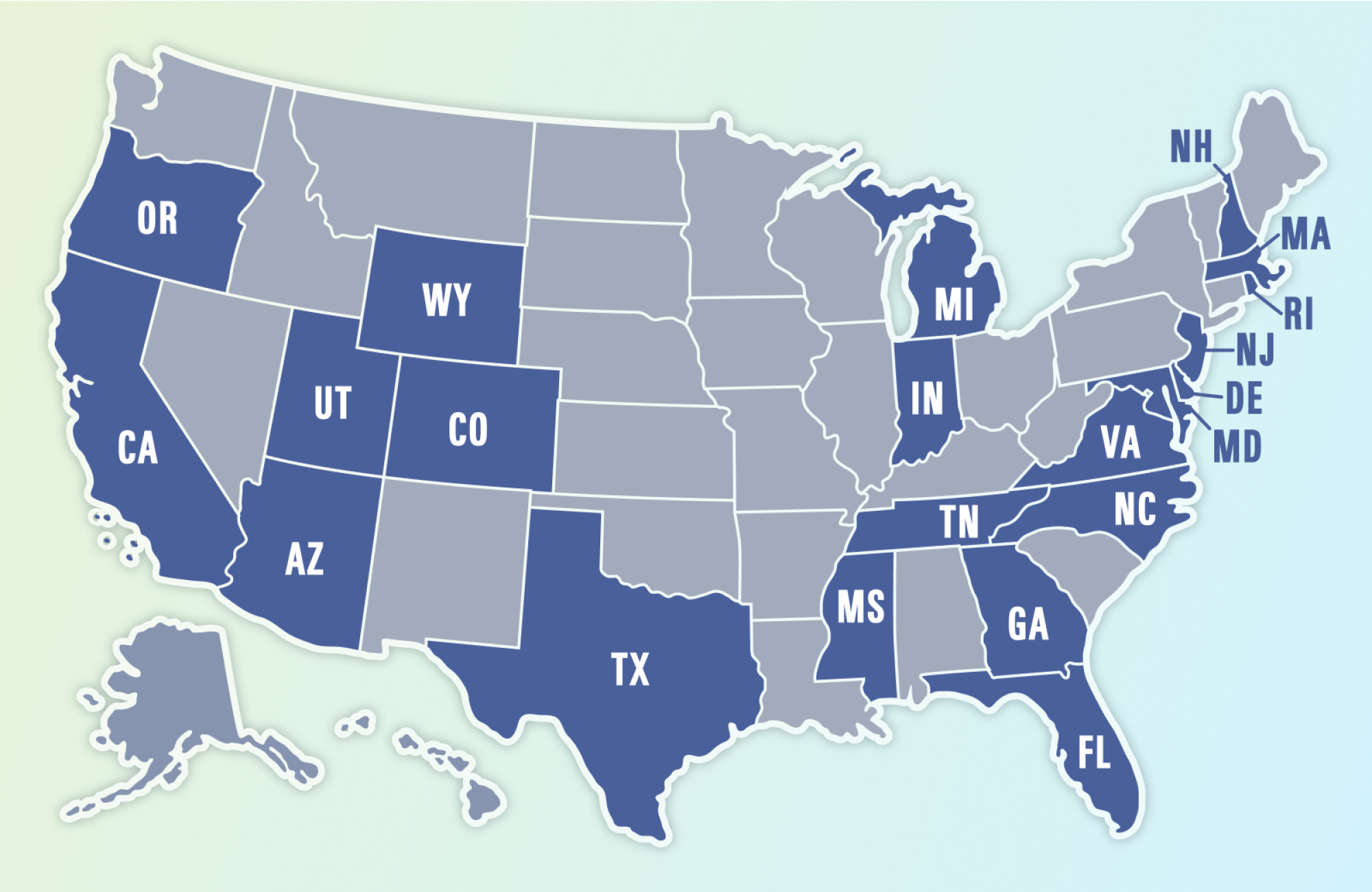
In September 2023, the National Oceanic and Atmospheric Administration (NOAA) announced that the United States set a new record for the number of weather disasters in a year that cost $1 billion or more. This year has seen 23 climate catastrophes costing $1 billion, breaking the last record (22) set in 2020. There has never been a more critical time to invest in resilience.
The recent passing of the Bipartisan Infrastructure Law (BIL), enacted as the Infrastructure Investment and Jobs Act (IIJA), provides transportation agencies across the country with opportunities to leverage additional funding for integrating resilience into their planning and operations. To that end, the BIL established the Promoting Resilient Operations for Transformative, Efficient, and Cost-Saving Transportation (PROTECT (§11405; 23 U.S.C. 176(e)) grant, which provides formula and discretionary funding programs to bolster surface transportation infrastructure through resilience planning and improvements.
While a Resilience Improvement Plan (RIP) is not required to apply for the PROTECT grant, it will position your agency to make the most of your grant funding. And if your agency doesn’t plan to apply for a grant, your agency can still benefit greatly from an RIP. In this post, we’ll share what an RIP is, why you should include one in your agency’s planning efforts, and some tips for how to prepare one.
Resilience Improvement Plans
An RIP is a plan developed by a state department of transportation (DOT) or metropolitan planning organization (MPO) in accordance with the PROTECT requirement to address surface transportation system resilience to current and future weather events and natural disasters. An RIP can help you get a better understanding of the vulnerabilities of your transportation systems, enhance planning and decision-making to address long-term resilience needs, and integrate resilience across your functional areas or departments.
These plans are more important than ever for transportation agencies, not only because of the increasing frequency and severity of disruptive events, but also because, if you’re applying for a discretionary grant through the PROTECT program, creating an RIP can help decrease your resilience project costs.
PROTECT grants generally have an 80% federal share for capital projects. However, by developing an RIP with priority projects, state DOTs and MPOs can reduce the non-federal share by 7%. To reduce the non-federal share by another 3%, the RIP must be integrated into the agency’s long-range transportation plan (LRTP) or Metropolitan Transportation Plan (MTP).
At a minimum, a comprehensive RIP should:
Define the objectives and scope by taking a long-term planning and a system-wide multimodal approach to achieving system resilience.
Include a risk-based assessment of vulnerabilities: are your transportation assets and systems at severe risk from current and future weather events and natural disasters? What is the probability of these events happening? What are the consequences to the owners and users of the transportation system?
Develop strategies that include both immediate and long-range planning activities and resilience investments. These strategies should consider the benefits of natural infrastructure.
Ensure that the RIP is ready for integration and implementation and it’s consistent with and complements state and local hazard mitigation plans and incorporates codes, standards, and regulatory frameworks to ensure improvements.
The American Association of State Highway and Transportation Officials (AASHTO) also has a useful resource summarizing the PROTECT grant requirements.
Taking Your Resilience Practice to the Next Level – Building Safer Communities
Besides the potential to reduce project and maintenance costs, there are many other benefits to developing an RIP. When a transportation agency plans with a long-term vision and can respond quickly, it can save lives and reduce the impact on the community.
If you’re applying for a PROTECT grant, a Resilience Improvement Plan (RIP) can drop your agency’s cost burden (non-federal share) by as much as 50%. But even if your agency doesn’t plan to apply for funding, there are compelling reasons to develop a RIP:
Being better prepared for the impact of extreme weather and climate hazards, reducing emergency response costs
Improving the safety and preparedness of your community, especially equity populations, during emergencies
Take a look at the three figures below, representing categories of resilience capabilities, to assess where your resilience practice stands. Like most agencies, you likely fall into Level 1 or 2 for most categories. Under each category, you’ll learn the ways an RIP can advance your agency’s resilience practice and what benefits your community can draw from it.
Expand the Scope of Vulnerability Assessments

Communities, even those with limited resources, can benefit greatly from vulnerability assessments that expand to the whole transportation system, not just the infrastructure built for cars. A multimodal assessment ensures evaluation of active transportation and transit facilities, which are critical in an emergency. This will ultimately improve safety for users across the system and generate important inputs for future investment decisions.
Improve Decision Making for Resilience Investments

The PROTECT funding requirements also state that RIPs should “use a long-term planning period.” Long-term planning means that you consider and evaluate both short-term needs and the impact of extreme weather and climate hazards over an asset’s entire service life (in the long term). In addition, the benefit cost analysis will help you better anticipate future costs and resource allocation.
Integrate Resilience Across Your Organization

Don’t let your RIP sit on the shelf collecting dust! Involving all functional areas of your agency in resilience efforts means your RIP has the best chance at successful implementation.
A Framework to Develop Your Resilience Improvement Plan
Now that we’ve made the case for investing in resilience and developing an RIP, how can you get started on developing one? To guide our clients through the process, we created and follow a comprehensive framework based on an analysis of pre-existing frameworks, a nationwide literature review, and agency interviews.
Each element of the framework is built upon our decades of experience and considers best practices gleaned from our work across the country. Below, we summarize each of the eight elements of the framework.
1. Review Your Mission and Vision
Align the RIP with your agency’s overall mission, your staff expectations, and with other programs across all functional areas while developing resilience-inclusive goals, objectives, and performance measures.
2. Identify Study Assets and Criticality
Identify transportation assets to be analyzed in the RIP, evaluate their criticality for system resilience, and consider impact to the community with respect to socioeconomic, usage & operation, and health & safety factors.
3. Assess System-Wide Vulnerability and Risk
Conduct a risk-based assessment to understand how vulnerable your transportation assets and systems are to future weather events and natural disasters. The vulnerability assessment should evaluate transportation assets’ exposure, sensitivity, and adaptive capabilities to each hazard. The risk assessment should consider the vulnerability of different assets to the impacts of a hazard, the likelihood of that hazard event occurring, and the consequences that may result from that hazard should it occur.
4. Determine Acceptable Levels of Risk
Consider at what point the foundational assets or infrastructure of the community would become threatened and require agency intervention, which will then determine the needs for resilience improvement.
5. Develop desired pathways and related actions
Describe how the agency is prepared to respond to the impacts of weather events, natural disasters, and changing climate conditions.
6. Implement resilience improvements
Incorporate the plan into your Long-Range Transportation Plan and Capital Improvement Program. This means aligning the goals and objectives, projects, priorities, and/or performance measures across all your plans.
7. Stakeholder engagement and communication
Agency-wide buy-in is important for successful implementation of resilience strategies—planners, designers, construction, the public, maintenance, emergency management & operations staff stakeholder engagement and communication should be conducted in all steps of the framework.
8. Monitor, evaluate, and adjust the plan
Develop performance metrics to monitor and evaluate the progress of the RIP and adjust and update the plan periodically.
This is just a high-level overview of our approach to developing RIPs. There are many other factors that are unique to your organization, your geography, and your needs that we would consider when developing an RIP for your agency.
Work with Our Experienced Resilience Team
Our team has extensive experience examining risk and incorporating resilience practices into long-range planning, especially in the areas of performance management, asset management, and vulnerability assessment.
We’ve worked closely with the Federal Highway Association (FHWA), State DOTs, MPOs, and local & regional agencies, conducting national and international studies in climate resilience and helping our clients develop RIPs and apply for PROTECT grants. Learn more about our capabilities here.

Dark purple states represent locations where our team has supported resilience and mitigation work.
Connect with us today about your PROTECT grant application or Resilience Improvement Plan.


Suseel Indrakanti, AICP
Principal, Practice Lead - Resilience and Sustainability